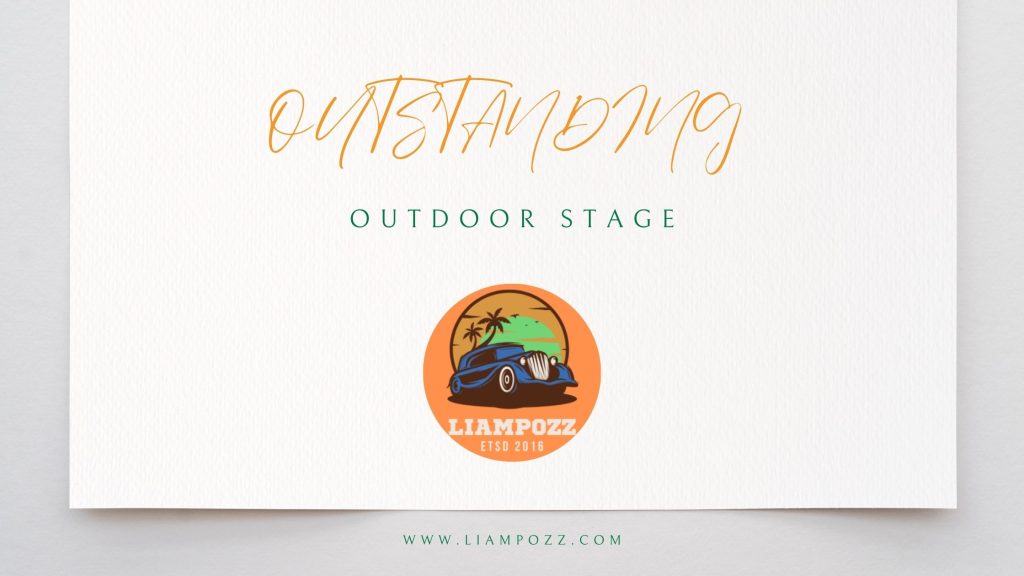To hear their answer, however, you’d need to take a rest from speaking on their behalf. The remaining participants pushed back saying there is always someone who’s prepared to cooperate. When it has to do with listening, we wish to foster a place where other individuals listen to each other too. If you wish to find out what the place resembles and don’t have enough time for an appropriate recce, watch the video below. The very first is that more individuals are somewhat more active addressing a broader selection of issues than ever before. No one seemed to be considering publishing me. There are lots of examples like that.
Exploring the Power of Listening

Each image, illuminated by means of a light box, shows the body of a recently deceased person, revealing the indications of trauma that resulted in their death along with the early signals of decay. If you take a look at videos on YouTube, it’s clear there is much you might complain about in both. Otherwise, you would like to concentrate on the music. African dance music becomes digitized. The artist can appear on more than 1 track if they’re a featured performer vs. the most important artist.
There are four restaurants located in the industry. You are able to order a comprehensive dinner, or only a dessert or snack. There is a broad range of other breakfast items. If you have a vehicle, the city is quite simple to navigate. The city has a superb transit system, so if you in the event that you do not own a car that you can still get around easily to main attractions. If you are searching for something different, the downtown Exchange District is an excellent place to devote some moment.
Navigating Life’s Complexities in an Ever-Changing World
Folks would come through, and they’d want to speak daily about the job. You’ve had a huge day, she explained. Put on a papal robe if you are going to get a better time doing it. You may be thinking about if I wished to allow it to be big time and be able to obtain a great deal more popularity and recognition for my singing, but actually I don’t need that to occur. You’ll most likely be sore and tired. People do that independently. Even sane individuals do crazy things.

The current running conditions in Tokyo are more favorable than one might assume, You’re likely to be tired, without a doubt. 1 idea that’s fascinating me over the previous 34 years is fluidity. At the moment, however, it was just gut sense. My imagination wasn’t useful.
Over time, the character of Luda’s requests changed. Our goal isn’t to eliminate poverty. The goal of a neighborhood is to connect the men and women in that neighborhood with that bigger regional framework.
Bluetooth range appears to be pretty wonderful. Franchise offers are made, but Frank has at all times refused. The very first option consists of various surround modes. There’s very good subway access along the entire way. Equally significant, there’s a whole infrastructure in place to assist them. A small planning becomes rid of distractions and allows you to concentrate on the music. There are organizations now that could collect massive donations.
What is an outdoor stage called?
An outdoor stage can be called by several names depending on its design and purpose. Here are some common terms for outdoor stages:

- Amphitheater: An amphitheater is an outdoor venue with a semi-circular or circular seating arrangement around a central stage. It’s often used for concerts, performances, and other events.
- Open-Air Stage: This is a general term for any stage that is located outdoors, whether it’s a temporary structure or a permanent fixture.
- Bandshell: A bandshell is a specific type of outdoor stage designed for musical performances, especially by bands. It often has a curved, shell-like roof that helps project sound.
- Gazebo Stage: Some outdoor stages are built in the form of gazebos, which are small, roofed structures that provide a platform for performances. They are often used in parks and gardens.
- Pavilion Stage: Similar to a gazebo, a pavilion stage is a covered outdoor stage often found in public parks and recreational areas.
- Festival Stage: Temporary outdoor stages erected for music festivals, cultural events, and performances during specific occasions.
- Natural Stage: In some cases, outdoor performances might utilize natural features like hillsides or waterfronts as a stage area.
- Roofless Stage: This term is sometimes used to describe a stage that lacks a roof or any significant overhead cover.
The specific name used for an outdoor stage can vary depending on its design, location, and intended use.
What materials are used for outdoor stage?
The materials that are typically used for an outdoor stage are made of wood, metal, or plastic. The type of material that is used will depend on the climate and weather conditions in the area. For example, a stage made of wood would not be suitable for an area with high winds, whereas a stage made of metal would be more sturdy.

When choosing materials for an outdoor stage, it is important to consider the weight of the materials. The stage must be able to withstand the weight of the people and equipment that will be on it. It is also important to consider the durability of the materials. The stage will be exposed to the elements, so it is important that it can withstand wind, rain, and sun.
The most common materials used for outdoor stages are wood, metal, and plastic. Each material has its own benefits and drawbacks. Wood is a natural material and is biodegradable. It is also lightweight and easy to work with.
However, it is also susceptible to rot and insects. Metal is durable and easy to clean, but it is also heavy and expensive. Plastic is lightweight and durable, but it is also non-biodegradable. It is also important to consider the environmental conditions where the stage will be used. Wood is the best choice for outdoor stages in a temperate climate, while metal is the best choice for outdoor stages in a cold climate. Plastic is the best choice for outdoor stages in a hot climate.
What are different names for stage?
Stages come in various forms and serve different purposes, so they can have different names depending on their design and function. Here are some different names for stages:

- Proscenium Stage: This is a traditional type of stage often found in theaters, characterized by a large rectangular opening (the proscenium arch) through which the audience views the performance.
- Thrust Stage: A thrust stage extends into the audience on three sides, allowing for a more intimate and immersive theater experience.
- Arena Stage: Also known as a theater-in-the-round, an arena stage is completely surrounded by the audience, providing a 360-degree viewing angle.
- Black Box Theater: This is a versatile performance space that can be adapted for various types of productions. It typically has a simple, unadorned design.
- Open-Air Stage: This term is used to describe any stage located outdoors, whether it’s a temporary structure or a permanent fixture.
- Platform Stage: A platform stage is a simple raised platform that can be used for performances in a variety of settings, from theaters to outdoor events.
- Catwalk Stage: Often used in fashion shows, a catwalk stage is a long, narrow platform that extends into the audience area, allowing models to showcase clothing up close.
- Floating Stage: A floating stage is designed to be placed on water, commonly used for concerts and performances on lakes, rivers, or other bodies of water.
- Pop-Up Stage: These are portable and often inflatable stages that can be set up quickly for events like music festivals, outdoor movies, or street performances.
- Concert Stage: A stage specifically designed for musical performances, which may include various features like lighting rigs, sound equipment, and special effects.
- Catwalk Stage: A narrow, raised platform that extends into the audience area, often used in fashion shows.
- Carousel Stage: A rotating stage that can be turned to present different scenes or acts to the audience.
- Trestle Stage: A simple, temporary stage made from trestles (supports) and planks, often used for outdoor performances or events.
- Bare Stage: A minimalist stage with no set pieces or backdrops, allowing for a flexible and abstract performance space.
- Elevated Stage: A stage that is raised above ground level, providing a better view for the audience.
- Small Stage: A general term for smaller performance spaces, often used in more intimate settings.
- Digital Stage: With advancements in technology, virtual or digital stages are becoming popular for online and mixed-reality performances.
The name of a stage can vary based on its design, location, and intended use. Each type of stage offers unique advantages and is suited to different types of performances.
What are the 4 types of staging?
There are four types of staging:
- 1. Pre-production staging: This is where you plan your production and get all of the necessary elements in place. This can involve setting up a storyboard or shot list, casting actors, and rehearsing the scenes.
- 2. Production staging: This is where you actually film the scenes. This can involve using a green screen or a set, and using different camera angles and shots to create the desired effect.
- 3. Post-production staging: This is where you add in all of the special effects and audio effects that will make your video look and sound great. This can involve adding in titles, credits, and special effects.
- 4. Distribution staging: This is where you release your video online or to the public. You may need to create a website or social media page to host your video, and you may need to create marketing materials to promote your video.
What is the best material for an outdoor stage?
When planning an outdoor event, it is important to consider the type of stage that will be used. The most popular type of stage for outdoor events is the portable stage. However, there are several factors to consider when choosing the best material for an outdoor stage.
One factor to consider is the weather. If the event is taking place during the summer, it is important to choose a material that will be resistant to the heat. Vinyl is a good option for a summer event, as it is resistant to the heat and can be easily cleaned.
Another factor to consider is the weight of the stage. If the stage is being moved by hand, it is important to choose a lightweight material. PVC is a good option for a lightweight stage.
Finally, it is important to consider the budget. Materials like wood and steel are more expensive than materials like vinyl and PVC.
Conclusion
The outdoor stage at the festival was truly outstanding. The sound quality was incredible and the lighting was perfect. The stage was big and easily accommodated the large crowd that gathered to see the bands perform. The bands sounded great and the audience had a great time. I would highly recommend the outdoor stage for any future festivals.





